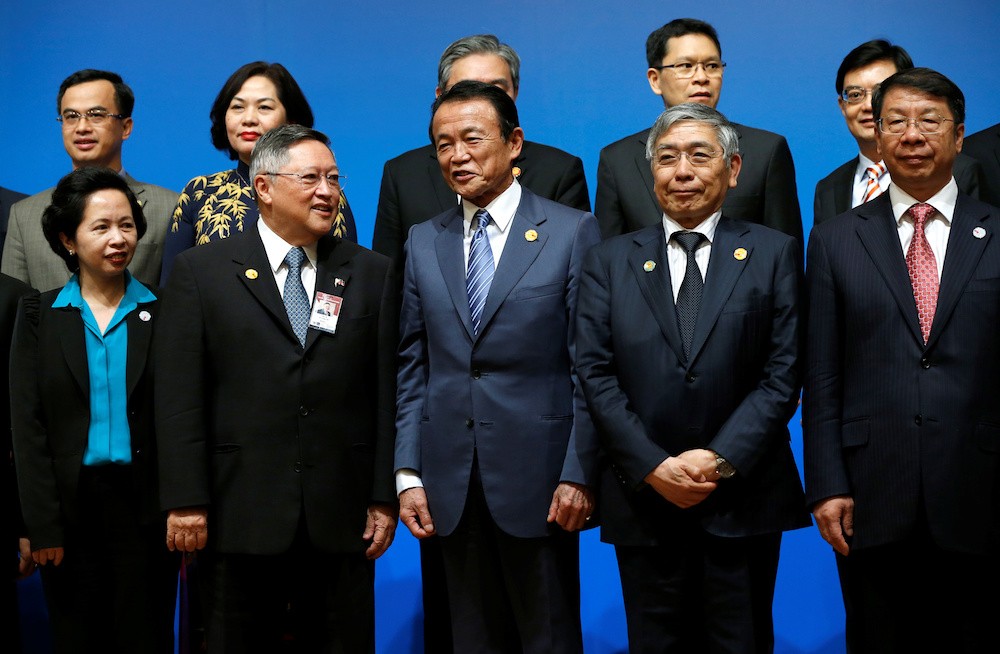ASEAN has but one choice only: Itself
The AOIP demonstrates that ASEAN is not choosing either side.
Change Size

The narrative that two superpowers are pressing ASEAN to make a choice is a staple of journalism. But is that truly the case?
International trade in the region in the 14th century already had a well-established structure. China was the dominant factor of trade, the rule of which was based on a tributary system. This was an exchange of loyalty and profit, in which neighboring countries sent messengers to contribute offerings as vassals, while the emperor bestowed sometimes 10 times worth of gifts.
The South China Sea was an important trade route. The Maritime Silk Road, as it is referred to by China today, is always exemplified in this context as the transportation route used by Cheng Ho (Zheng He). The role played by Cheng Ho to recruit tributary states by traveling to more than 30 countries along the Maritime Silk Road was instrumental indeed.
The capture of Malacca by Portugal in 1511 brought a rather abrupt change to maritime hegemony. This coincided with silver-mediated currency settlement, which substituted barter-style tributary trade, made available by the Iwami silver mine, at one point supplying nearly 30 percent of the world's circulation. The Maritime Silk Road, and together with that, bartering of loyalty and profit, came to a decline.
Modern day trade is not designed to seek loyalty in exchange for financial gain. Many important partners for Southeast Asia are increasing trade and investment on an equal basis. China, the once dominant source of wealth and today a major trade and investment partner, does not trade heavily with countries like Laos, Cambodia and Myanmar, while the proportion of investment from China is significantly high in these three countries, showing China’s policy priorities.
But this is not happening in ASEAN as such. This is happening in individual countries that are ASEAN member states. At the ASEAN-related summits, in addition to regional cooperation, discussions are held on regional issues such as the South China Sea, the ASEAN Outlook on the Indo-Pacific (AOIP) and North Korea.
In particular, the AOIP clearly shows the standpoint of ASEAN. The AOIP demonstrates that ASEAN is not choosing either side. The AOIP focuses on the very identity of ASEAN.
ASEAN values the concept of centrality, and this requires unity. The difficulty of maintaining an international coalition is taught, surprisingly, at classic classes of Japanese high schools. In 226 BC, in order to curb the penetration of the emerging land-locked Qin Kingdom, the six eastern kingdoms tried to coalesce vertically to maintain independence, but gradually Qin's policy of connecting to each and every kingdom horizontally prevailed, until finally Qin unified the entire China for the first time in history.
Japanese high school students (are supposed to) know this history of Hezong Lianheng (Vertical Alliance and Horizontal Alliance).
The AOIP suggests that the Indo-Pacific is where ASEAN identity resides. Denial of the Indo-Pacific is equivalent to denying ASEAN’s very identity. It is natural that ASEAN should exercise unity to safeguard the pledge in the AOIP. Japan fully supports the AOIP, because that is Japan’s choice.
It took Japan 71 years since the dispatch of its first military contingent to the region until disarming itself. After World War Ⅱ, Japan kept its constitutional promise and spent more than 75 years without firing a single shot abroad.
The "Fukuda Doctrine" announced by then-prime minister Fukuda in 1977, 10 years after the establishment of ASEAN, declared that Japan would not become a military power. This alone suffices to show that the recent cooperation among Japan, the United States, Australia and India is not even close to NATO.
The Cold War was a choice of which camp to join and which regime to run a government. Depending on the perspective, the choice today is simpler. The choice is not about which side, but about universal ideas such as the "rule of law," enshrined in the United Nations Sustainable Development Goals 2030.
By issuing the AOIP, ASEAN has already made its decision. ASEAN has but one choice only: itself.
***
The writer is ambassador of Japan to ASEAN. The views expressed are his own.









